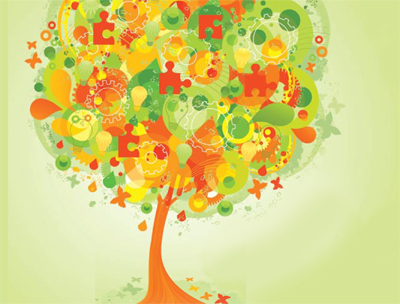With budget cuts right and left—many aimed at special education—it’s likely that regular education teachers are or soon will be the only instructors for students with learning disabilities. In fact, the 26th Annual Report to Congress on IDEA reported that approximately 96% of general education teachers have learning disabled students in their classroom. That means there’s an ever-greater need to differentiate instruction in every classroom.
First, let’s talk about what we mean when we say a student is learning disabled (LD). In North Carolina, where I teach, LD is defined by state rules and regulations as “an inclusive term used to denote various processing disorders presumed to be intrinsic to an individual. A learning disability may occur concomitantly with, but is not primary the result of, other handicapping conditions and/or environmental, cultural, and/or economic influences.”
A plethora of terms pinpoint learning traits for LD students, from agnosia (inability to obtain or process information through one of the input channels or senses), to aphasia (difficulty processing the spoken word), to dysgraphia (extremely poor handwriting or the inability to perform the motor movements required for handwriting), to dyslexia (difficulty with phonological awareness), and so many more.
However, all the terms that categorize to the “nth” degree the traits of an LD student will not necessarily give regular education teachers a better understanding of how to teach and reach these students. Rather, professional development, collaboration with colleagues, and determination can help teachers develop effective strategies to ensure all students succeed in the classroom.
The following are some basic steps and strategies general education inclusion teachers can use to help all students— including LD students—succeed.
- Recognize that LD students are not less intelligent than their peers. In fact, LD students often have normal to above normal intelligence; they simply process information in a different way.
- Understand that LD students may be hampered by a low sense of self-esteem—especially in the middle grades. Part of teaching them means helping them become confident learners.
- Know each student’s Individualized Education Plan (IEP), but also get to know students personally for an even better understanding of their learning styles, abilities, and preferences. Talk to them. Talk to their parents and other teachers. Then differentiate instruction according to student strengths.
- Welcome and involve all students in all classroom activities and discussions. LD students often need a little extra nudge because they are embarrassed by their disability. Don’t single them out—include them in.
- Provide options. When possible, let students choose how they will present material for an assignment.
- Use technology to engage students and teach to their learning styles. It can be as simple as making course material available on tape, MP3, or audio CD.
- Provide a framework. Start each class by presenting a short written outline of what will be covered during that class. Indicate the amount of time each item will take to accomplish (more or less). This gives students a sense of security and structure because they know what to expect.
- Keep records. This includes keeping samples of your students’ work, not only for your edification or for their next IEP meeting, but to show them how well they are progressing.
- Collaborate. You are a part of the IEP team, but you also will benefit from the knowledge and experience of other general education teachers as well as special education teachers.
The most important guidance specialists give inclusion teachers is this: students who have been identified as LD do not “get it” in the same way or at the same pace as students in the “norm spectrum,” but that doesn’t mean they don’t have the mental capacity to get it. It simply means they’ll get it in a different way.
Previously published in Middle Ground magazine, August 2011
Kathryn Scarborough is a remedial English teacher at Durham Technical Community College, Durham, North Carolina. E-mail: lenora35749@yahoo.com
